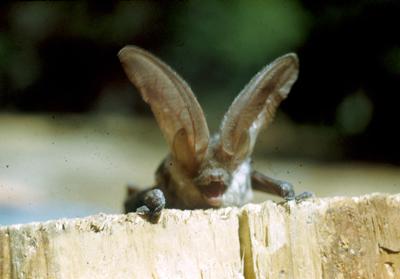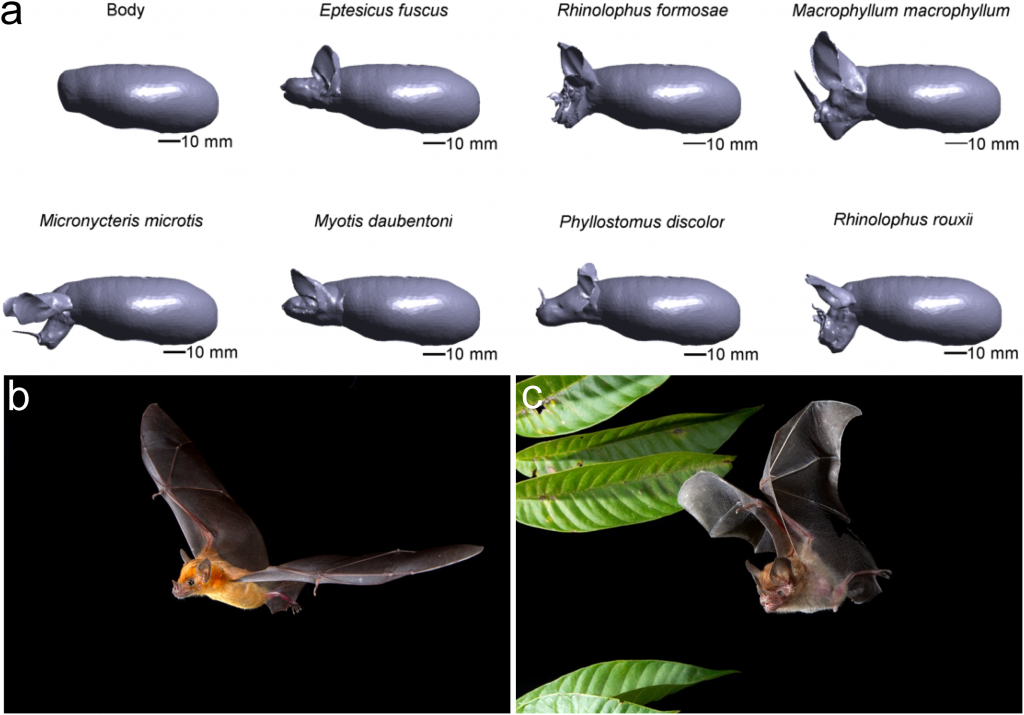 Bats are probably one of the most misunderstood animals on Earth, with groups dedicated to correcting their misrepresentation as nocturnal blood suckers most closely related to the vampire. But if you have ever seen bats up close or in flight, it can be an amazing thing.
Bats are probably one of the most misunderstood animals on Earth, with groups dedicated to correcting their misrepresentation as nocturnal blood suckers most closely related to the vampire. But if you have ever seen bats up close or in flight, it can be an amazing thing.
I have been lucky to see large quantities of migrating Mexican free-tailed bats in Austin, Texas, where they congregate under the Congress Avenue Bridge annually. This congregation numbers from 750,000 to 1.5 million bats and is the largest urban bat colony in North America. Quite the sight, crowds would gather there nightly while the bats were in town to marvel at the fascinating creatures and celebrate all things bat-related. Even while we remain transfixed on all that bats represent, they face and uphill battle being misunderstood. And 3D printing is helping to correct all of that through contributing new research on how bat heads facilitate their flight and motion.
 The popular scientific wisdom about bat aerodynamics is that they are the only flying animals with prominent external ears (pinnae), and it has been widely understood that bat faces, including the pinnae and noseleaves, impede powerful aerodynamics. Instead, goes the theory, they have poor aerodynamics compared to birds but they also have strong senses. It turns out that bats’ large heads and complicated facial features of bats might facilitate strong flying skills too.
The popular scientific wisdom about bat aerodynamics is that they are the only flying animals with prominent external ears (pinnae), and it has been widely understood that bat faces, including the pinnae and noseleaves, impede powerful aerodynamics. Instead, goes the theory, they have poor aerodynamics compared to birds but they also have strong senses. It turns out that bats’ large heads and complicated facial features of bats might facilitate strong flying skills too.
In the paper “The Aerodynamic Cost of Head Morphology in Bats: Maybe Not as Bad as It Seems,” a team of European researchers 3D printed seven different bat species’ heads and then unleashed them in wind tunnels, studying their drag to lift ratio (lift is the upward force that counteracts gravity, while drag is exerted by the air on the bat as the force opposing forward motion) to determine how aerodynamic bat faces truly are.
The results confirm “non-streamlined facial morphologies yield considerable drag forces but also generate substantial lift” — which means that there is no evidence that the size and shape of bat heads impede excellent aerodynamics compared with birds.
Wow. If you think about it, that’s a big deal that scientists were able to put 3D printed heads from seven bat species in wind tunnels, study their aerodynamics, and turn the status quo scientific wisdom about bat heads on its head.
The researchers used a SkyScan 1076 micro-CT machine at a resolution of 35 μm to scan seven different bat heads. The final 3D printed models were produced by Easy2day in Odense, Denmark. Also, in order to ensure that the data about differing bat heads were correct, a standardized body was created using the Chinese 3D modeling software EasyToy from Livesforce. The shape of the body was modeled after profile photos of flying bats and scaled to a length of 72 mm.
After testing the different bats in a wind tunnel, the scientists came to the conclusion that bat pinnae act like an airplane wing contributing to both lift and drag in flight. Therefore, they do not contribute to a significant slowing down of flight time and other aerodynamic factors. In fact, the pinnae provided six out of the seven bat species studied with a net gain in flight efficiency. Also, pinnae help conserve bats’ energy in flight. So while bat faces may be a drag, they are also a lift.
It is 3D printing that has made this lift — a neutralizing aerodynamic force — into a scientific contribution that can change the way we understand why bats look the way they do.
What other scientific breakthroughs do you know of that were helped along by 3D modeling? Let us know of your findings, as well as your thoughts on these bats, in the 3D Printing to Understand Bat Aerodynamics forum thread over at 3DPB.com.
Subscribe to Our Email Newsletter
Stay up-to-date on all the latest news from the 3D printing industry and receive information and offers from third party vendors.
You May Also Like
Gorilla Sports GE’s First 3D Printed Titanium Cast
How do you help a gorilla with a broken arm? Sounds like the start of a bad joke a zookeeper might tell, but it’s an actual dilemma recently faced by...
Nylon 3D Printed Parts Made More Functional with Coatings & Colors
Parts 3D printed from polyamide (PA, Nylon) 12 using powder bed fusion (PBF) are a mainstay in the additive manufacturing (AM) industry. While post-finishing processes have improved the porosity of...
$25M to Back Sintavia’s Largest Expansion of Metal 3D Printing Capacity Since 2019
Sintavia, the digital manufacturing company specializing in mission-critical parts for strategic sectors, announced a $25 million investment to increase its production capacity, the largest expansion to its operations since 2019....
Velo3D Initiates Public Offering in a Bid to Strengthen Financial Foundations and Drive Future Growth
Velo3D (NYSE: VLD) has been among a number of publicly traded 3D printing firms that have attempted to weather the current macroeconomic climate. After posting a challenging financial report for 2023,...

































